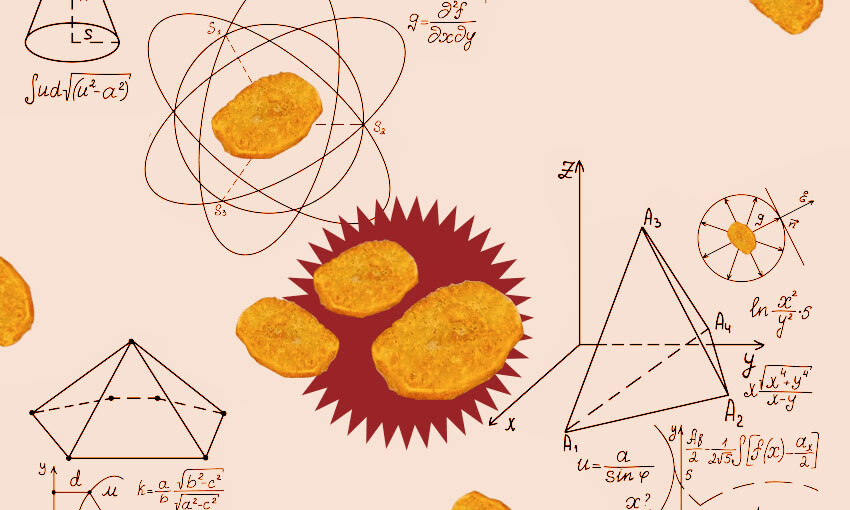It has long been an unwritten rule in Aotearoa that ordering one potato fritter doesn’t always yield just one potato fritter. Alex Casey investigates.
“How much are your potato fritters?”
“One dollar for one”
“And if I order one, how many will I get?”
“Two”
There are few surprises left on this crazy blue marble we call Earth, yet the quantity of potato fritters one receives in their fish and chip bundle continues to shock and amaze us every summer. Order one potato fritter and get two, order three and get five. Think you’ve found them all? Look again. ‘Tis a rare occasion where an order for one potato fritter actually yields just one and, when it does, it is probably because it’s been sliced from Dug the potato himself.
So, is there a method to the madness? Do fish and chip shops take a shining to certain people and decide to spoil them with starch? Is it a potato laundering thing? Is it a supply chain thing? Is the North Island stingier than the South Island when it comes to fritters, or am I just projecting? And is there an equation that can finally put an end to the eternal national mystery – how many fritters am I actually going to get this time around?
To ensure a robust statistical process throughout this investigation, I consulted with Melissa Tacy, incoming president of the New Zealand Mathematical Society. She said that if I was researching for a peer-reviewed paper, I would need to contact a “significant” number of fish and chip shops. She also said that if I wanted to do the “bare minimum” I should contact 20 shops. I proceeded to contact 20 shops – 10 in each island – and asked them the same two questions:
- How much is one potato fritter?
- If I order one, how many will I get?
The responses were varied and thrilling. One shop said they stick to the ratio of one order: one fritter, but hastened to add that theirs were a “really big circle”. Another said they have been dishing out two-for-one all summer due to a crop of unusually small potatoes. Another said they do three for one (!). Yet another said they would never, ever, serve more than one fritter when confronted with an order of one. Frankly, it was fritter chaos across the country.
Once I had gathered my data, Tacy advised that I find the average number of potato fritters served up per order, which seemed easy enough for someone who failed NCEA level two algebra. If a shop said they serve two fritters when the taters are “running small,” I called that a result of 1.5 fritters on average. If someone said “a few” I called that three fritters.
Based on the “bare minimum” amount of research, the national average suggests that an order (O) for one fritter (F) will yield a result of 1.475 fritters, or a formula of O=Fx1.475. The national median, which Tacy advises me to include since some “generous” shops will throw off the average, comes in slightly lower at 1.2H FPO (fritters per order).
When you start to break things down by island, things get even more interesting. Laughing in the face of snobbish stereotypes, JAFAs and coffee culture, the North Island actually proved to be more generous when it comes to FPO with an average serving of 1.55 fritters per order, or a formula of O=Fx1.55. They’re cheaper in the north too, with an average price of $1.15 P/F.
Down south, fish and chip shops are less likely to fritter away their fritters. The average FPO came in at 1.4, or a formula of O=Fx1.4. I called Anna Arndt, owner of Erik’s Fish and Chips in Queenstown, demanding answers about this fritter phenomenon. Arndt serves two fritters for every one ordered, but that doesn’t mean that it comes cheap. At $2.50 an order, Erik’s was one of the premium prices of the lot, trumped only by a spot in Bluff that sells them for $3.60 a pop.
In the words of the bard, it is all about location, location, location. When Erik’s opened six years ago in the tourist hot spot, fritters weren’t even on the menu. It was only when they were faced with overwhelming demand from visiting Australians, who curiously referred to them as both “potato scallops” and “potato cakes”, that they began stocking the humble fritter. “It’s just a slice of potato in batter, they’re random really aren’t they?” says Arndt. “But they do taste nice.”
Fritter sales have been steady in Queenstown over summer, Arndt says, but nowhere near as popular as they were back when the borders were open. Perhaps this is why southern fritters come at a slightly higher cost, with an average price of $1.4 P/F. Arndt is looking forward to when international tourists can return to her fish and chip shop and treat themselves to a two-for-one fritter. “When the borders open, the things [fritters] will go absolutely nuts again.”
While things have quietened down on the fritter front, Arndt says Erik’s has invented a brand new menu offering in the meantime, never before seen in Aotearoa: a deep fried kiwifruit with cinnamon and sugar. But If you order one, how many do you get? “One,” she says.
“One whole one.”





